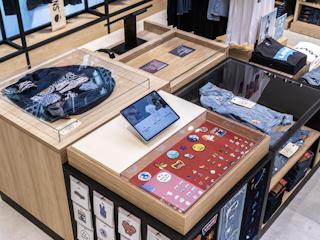Understanding the Appeal of the Metaverse
How much of the future is virtual?

fevereiro 18, 2022
In October, Facebook changed its name to Meta, announcing its claim to the metaverse. While a lot of consumers questioned the use of a term from Neal Stephenson’s dystopian novel Snow Crash, many others were left wondering what the future would hold.
The Overlap of Metaverse and Esports
One way to make sense of the metaverse is to look at it through an esports lens. In the past decade this young industry has gone through what the metaverse looks to go through in the decade to come. Three parallels can be drawn between esports and the metaverse: their mixing of realities, their wild west-like beginnings, and their video game genealogy.
Like the metaverse, esports blend the physical with the digital as players and spectators coexist in mixed, computer-generated realities. As such esports has been a trailblazer in terms of social, immersive, mixed-reality experiences, becoming the billion-dollar industry it is today. This growth had been predicted and proclaimed from an early point, drawing pundits and cowboys into the space alike. Many recognized that the future of entertainment, leisure and events was digital, global and online, and so the question was not how or if esports was going to be big, but rather when this would happen.
The metaverse too represents an inevitable technological convergence for entertainment, leisure and events and is drawing frontrunners into uncharted territory to stake a claim early. Interestingly but perhaps not surprisingly, both esports and the metaverse are offshoots of the biggest entertainment industry in the world: video games. The future it seems is not only digital, online and global; the future is driven by digital play.
But if the Metaverse Is Essentially a Repeat, Then Why the Hype?
The hype around the metaverse can be summed up very succinctly: web3 technology.
This generation of new technologies means social, immersive, mixed-reality experiences can be pushed to new heights, rounding the corner to a virtual place where our digital selves can exist like never before. The word “place” is perhaps deceiving though; the metaverse is a concept more than it is a place. It’s a term for the digital and connected whole, rather than a collection of parts. In a word, the hype is about a yet to be fully imagined world of near-limitless immersive potential becoming a reality in the decade to come.
But Why Are People Attracted to It? What Exactly Does the Metaverse Offer?
Tracking back to esports, a generation of young people have grown up with a very different perception of sports experiences because of the virtual places in which they played games and watched sports. Gen Y and Z care about the digital worlds they spend time in because these places allow their digital selves to engage in meaning-making communally. Virtual playgrounds like Roblox, Fortnite, Minecraft, VR Chat, Decentraland (and arguably Meta) are places where communities grow because people can co-create interactive, connected, meaningful and immersive experiences.
These virtual playgrounds create these novel experiences by “outdoing” the reality of the regular universe. For one, they facilitate socializing without physical restrictions: a machine and an internet connection is enough to connect anyone, anywhere to play, create and socialize with others from around the world in highly immersive ways. This deep immersion afforded by Web3 technologies gives the metaverse a leg-up on its analogue counterpart.
Adding to this immersion, special collaborations allow for new and unique experiences to be created in the metaverse. Through Fortnite, for example, Epic Games has collaborated with Disney for new Star Wars content, the NFL, Marshmello, DC comics for Batman content, the famous esports gamer Ninja, Travis Scott, Rocket League, Neymar, Balenciaga, Monopoly, and Air Jordan to create content to keep the Fortnite experiences interesting, relatable and unique.
Lastly, socializing combined with brand and IP collaborations has ignited massive online events. For Fortnite, this has translated into consistently hosting some of the biggest online events in the world: concerts, competitive cups and championships, content premieres, and new game chapters have brought huge crowds into their part of the metaverse.
In short, the attraction of the metaverse comes from the fact that it outdoes the regular universe in many ways—its resolution is better than that of the real world, so to say—and Gen Y and Z have developed an appetite for these hyperreal experiences.
What Business do Brands have in the Metaverse?
It follows that brands that are playing the long game are looking to enter the metaverse early to engage with this otherwise hard to reach demographic. We see three major trends in the appeal of businesses entering the metaverse. The first is the opportunity for long-term brand investments. Brands are planting the seeds of awareness in a group of people they would otherwise never reach. The second trend is the metaverse’s affordance to engage with people differently. In a hyperreal environment, the consumer journey can be rethought entirely. Brand activations can be experiences like nothing that has been done before. Lastly, being a first mover in a space highly published on brings publicity value in the short term and at the very least shows a brand’s willingness to be innovative.
Unsurprisingly, these trends have been played out before in esports. Many brands desperate to connect with Gen Y and Z have invested enormously in mere presence in the esports space. Audi, Honda, Coca-Cola, Red Bull, DHL, Mastercard, the US Army and Airforce, Mountain Dew, and even Walmart, to name a few, have spent heavily on esports partnerships to plant the seeds of their brand in the minds of a young, hard-to-reach demographic. In the same vein, over in the metaverse, Roblox hosted a Gucci Garden, Coca Cola did an activation in Decentraland, Balenciaga collaborated with Fortnite on digital outfits, and Selfridges collaborated with Pokemon on a virtual city to shop for exclusives.
Going Where Your Target Group is
The metaverse will likely affect just about everyone in some way in the near future. Not on social media? Don’t play video games? It won’t matter: as the metaverse keeps expanding and unfolding few will remain unaffected by this next step in the evolution of technology. It’s important to understand this phenomenon, but not just because it’s inevitable. The metaverse also presents new opportunities for businesses and demands a different approach to strategic disciplines like marketing and branding. If you don’t understand what the metaverse can offer, or if you can’t see what’s bringing people into this new reality, then you might find yourself or your company being left behind when looking to connect with your target group: go where they are, instead of where they were.





